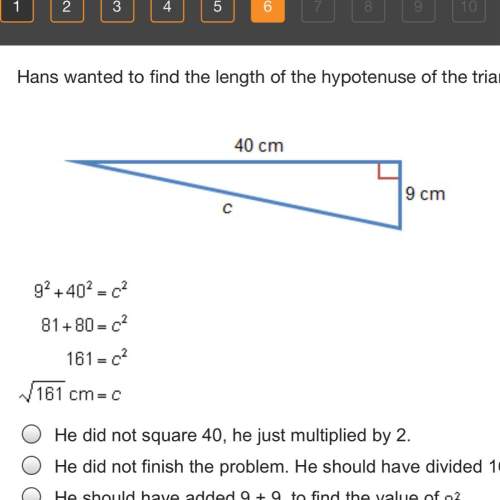Tip #1: put the if-part first and the then-part second.
so, (q, if p) = (if p, then q)<...

Mathematics, 04.02.2020 05:48 reinabrooke
Tip #1: put the if-part first and the then-part second.
so, (q, if p) = (if p, then q)
for example, (i sleep, if i’m tired) = (if i’m tired, then i sleep)
tip #2: only if = then
so, (p only if q) = (if p, then q)
for example, mary drinks cola only if it is pepsi = if mary drinks cola, then it is pepsi.
tip #3: unless = if-not
so, (p unless q) = (p, if-not q) = (if-not q, then p)
for example, mary drinks cola unless it is coke = if it is not coke, then mary drinks cola.
question 1:
a. translate the following statements to their corresponding symbolic expressions. be sure to use statement indicators and connective indicators in your translation to produce conditional statements. a translation key must be provided for each exercise (see above for an example).
1) if it is raining, then jack will not go to the baseball game.
2) i eat, if i’m hungry.
3) jack watches football on t. v. only if the ohio state team is playing.
4) janet plays with weird pets unless it is a tarantula.
5) when i watch a baseball game, i eat several hot dogs.
b. for these five statements above, identify the antecedent and the consequent for each conditional.
question 2:
construct a valid deductive arguments by applying the five argument forms (rules) on the worksheet below. you will need to insert your own example for each rule, following the form of the argument. a translation key must be provided for each exercise (see above for an example).
forms/rules:
modus ponens
1) if p, then q.
2) p.
3) thus, q.
modus tollens
1) if p, then q.
2) not q.
3) thus, not p.
hypothetical syllogism
1) if p, then q.
2) if q, then r.
3) thus, if p, then r.
disjunctive syllogism
1) p or q.
2) not p.
3) thus, q.
dilemma
1) p or q.
2) if p, then r.
3) if q, then s.
4) thus, r or s.
your examples for each form/rule above:
question 3:
1. answer the question: what is the advantage of translating verbal arguments to symbolic argument forms?

Answers: 3


Another question on Mathematics

Mathematics, 21.06.2019 18:50
Question b of 10which of the following describe an angle with a vertex at a? check all that applyo a. labcов. савd dooo c_baco d. zacb
Answers: 1

Mathematics, 22.06.2019 01:00
The random variable x is defined as the number marking the sector in which the arrow lands when the spinner in the diagram is spun once.
Answers: 2

Mathematics, 22.06.2019 02:00
Polygon abcd is a parallelogram, and m? abc = 127°. the length of is 10 units, and the length of is 5 units. the perimeter of the parallelogram is units, and m? bcd is °
Answers: 3

Mathematics, 22.06.2019 02:30
Atriangle has side lengths of x, x+11, and 3x+5. what is the perimeter? a. 3x^2 + 38x + 55 b. 4x + 16 c. 5x + 16 d. 3x^3 + 38x^2 + 55x
Answers: 1
You know the right answer?
Questions

History, 06.07.2019 09:00


Mathematics, 06.07.2019 09:00



Mathematics, 06.07.2019 09:00

Mathematics, 06.07.2019 09:00


Mathematics, 06.07.2019 09:00


Mathematics, 06.07.2019 09:00

English, 06.07.2019 09:00



Mathematics, 06.07.2019 09:00









